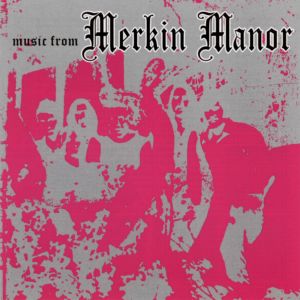
- Format: MP3

In most corners of America in late 1960s, youth were growing their hair long and partaking in the cultural explosion of the times. Utah, on the other hand, remained staunchly Mormon and conservative. Amid that atmosphere, Merkin sprang out of the small town of Orem, Utah. Rocky Baum and Ralph Hemingway were high school friends, and occasionally Hemingway would sing along with Baum's guitar playing as something of a lark. By the summer of 1969, after a few years of playing together, the duo felt the absence of a backbeat, so they set out to make the twosome a rock band. Drummer Alan Newell, bassist Kent Balog, and guitarist Doug Hinkins were added to fill out the combo, and they came up with the odd name Merkin derived either from the dictionary or from an obscure b-movie, Can Huronymous Merkin Succeed with Mercy Hump?.
The band rehearsed at Hinkins' house, playing cover versions of popular songs. Soon they were writing original material, most of it composed by Baum, and with the addition of schoolmate Rod Olsen as manager, the band began attaining gigs at local high schools, colleges, and other assorted youth hangouts. Newell was replaced by Balog's twin brother Gary in 1970, and Robert Barney replaced Hinkins as lead guitarist. Richard Leavitt was also added on keyboards to round out the Merkin sound. In 1971 the band recorded a live demo that caught the attention of Gay Young of Kommittee Productions, and a recording session was arranged for the band in Los Angeles in 1972.
The subsequent album, Music From Merkin Manor, was recorded in four days and gained some airplay in San Francisco, enabling the band to tour Colorado, but the album was not officially released (in a pressing of only 200) until early 1973, by which time Merkin had returned to Utah, and any commercial momentum was stifled. In addition, Baum had received sole songwriting credit on the album, infuriating the rest of the band. He was asked to leave, and Merkin limped on, finally calling it quits in 1974.